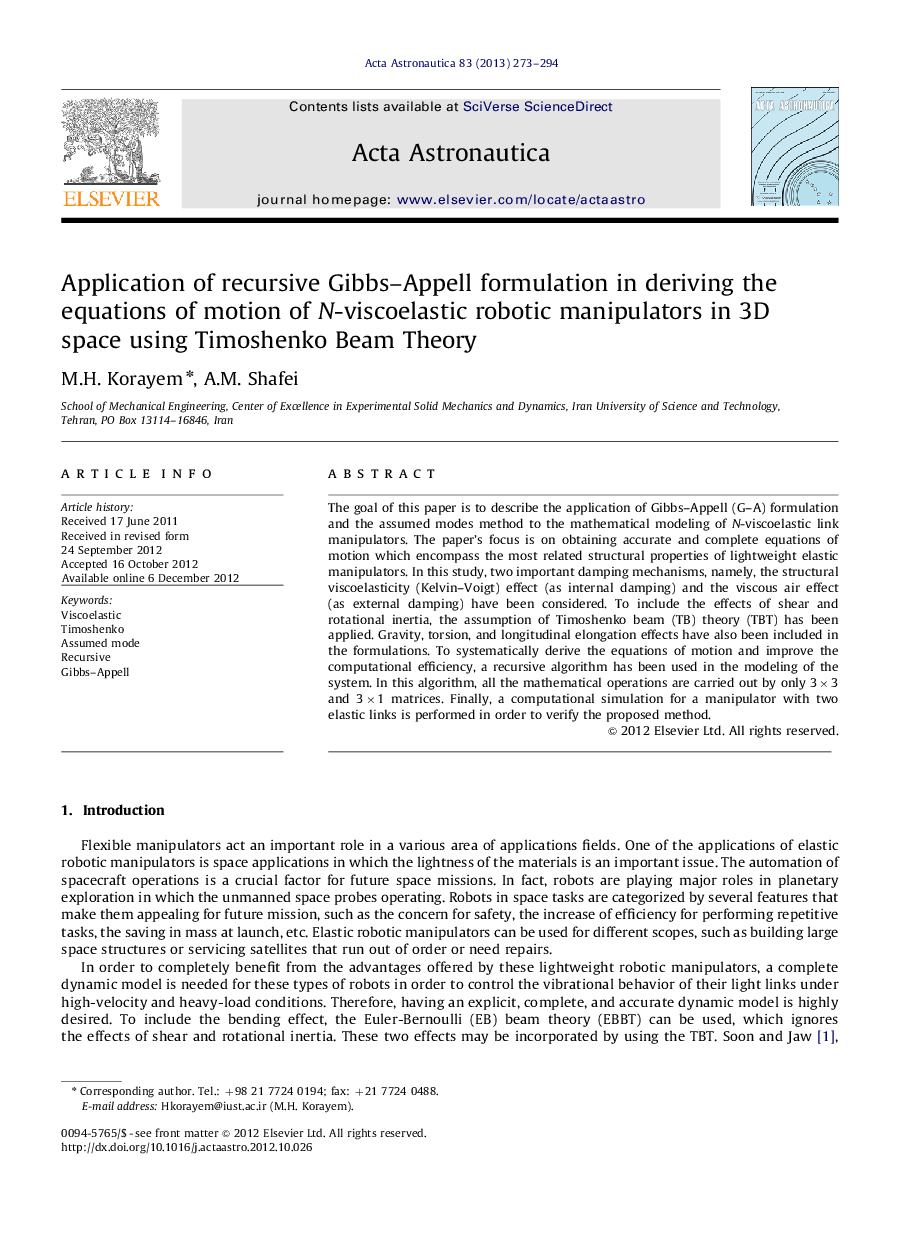| Article ID | Journal | Published Year | Pages | File Type |
|---|---|---|---|---|
| 1715107 | Acta Astronautica | 2013 | 22 Pages |
The goal of this paper is to describe the application of Gibbs–Appell (G–A) formulation and the assumed modes method to the mathematical modeling of N-viscoelastic link manipulators. The paper’s focus is on obtaining accurate and complete equations of motion which encompass the most related structural properties of lightweight elastic manipulators. In this study, two important damping mechanisms, namely, the structural viscoelasticity (Kelvin–Voigt) effect (as internal damping) and the viscous air effect (as external damping) have been considered. To include the effects of shear and rotational inertia, the assumption of Timoshenko beam (TB) theory (TBT) has been applied. Gravity, torsion, and longitudinal elongation effects have also been included in the formulations. To systematically derive the equations of motion and improve the computational efficiency, a recursive algorithm has been used in the modeling of the system. In this algorithm, all the mathematical operations are carried out by only 3×3 and 3×1 matrices. Finally, a computational simulation for a manipulator with two elastic links is performed in order to verify the proposed method.
► This paper proposes a comprehensive model of N-viscoelastic robotic manipulators. ► The equations of motion are derived based on recursive Gibbs–Appell formulation. ► Timoshenko’s beam theory has been applied for modelling of the links. ► The effects of internal and external damping have been included in modelling. ► The simulation results for a double elastic pendulumare presented.
